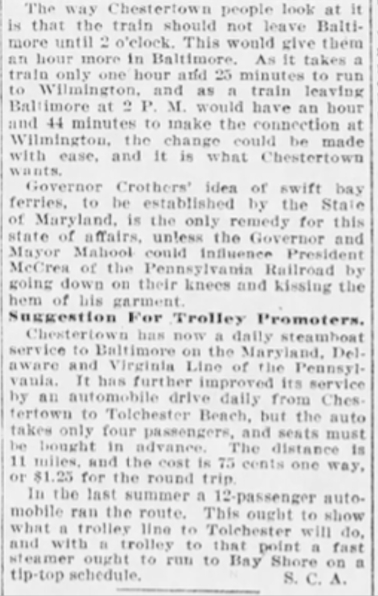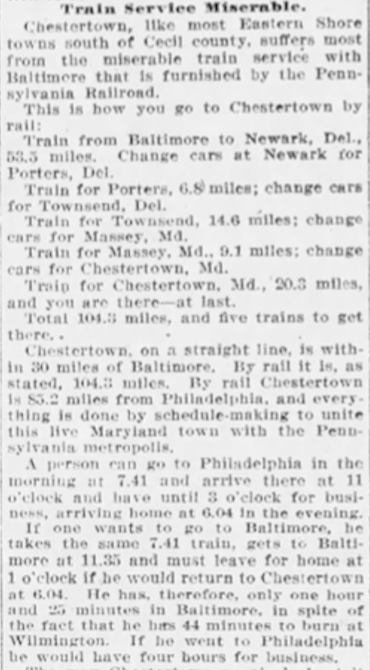Editor’s note: This is a new Spy series that will be sharing historic news clippings on Chestertown from the perspective of the newspapers of Washington, D.C. Baltimore, Philadelphia, and New York. While the Shore’s local newspapers have faithfully recorded Chestertown’s life and times since 1791, when this small town periodically finds itself being the subject of a major daily story, it’s always been greeted, like any small community, with extreme interest. For when those occasions occur, now or in the past, it gives the community a rare opportunity to see how the rest of the world may view it. And thanks to such powerful databases as newspapers.com, we can now able to share some of that coverage from the West of Chestertown.
The Spy was conversing with one of our agents on Queen Street this morning on the matter of public transportation, or the lack of it in Kent County. It’s one of the top four concerns raised by a recent United Way-sponsored report, and so it was interesting to discover this clipping from a Baltimore Sun article reporting on the dreadful train service Chestertown almost one hundred years ago.
The Baltimore Sun
November 25, 1910





Gren Whitman says
“…kissing the hem of his garment,” indeed!
joe diamond says
The Sun missed the reality the railroads fought from day one of rail service. Bulk freight can be moved economically with train service. Moving passengers requires either many filled seats or massive ticket prices. Nothing has changed that reality in the hundred or so years since the Sun article appeared. What has been added since then….for those who have just arrived on this planet…..are the efficient trucks & busses that put railroads out of the short haul business.
joe
Rob Etgen says
Thank you Spy for publishing this reminder of our history of train service between the western and Eastern Shore. Any consideration of a new auto oriented Bay Bridge must include analysis of whether passenger rail can handle some of the reach the beach traffic load. There are existing rail lines between Baltimore/Washington and the beaches (via Newark), and much of the route is already high speed rail. Perhaps improvements to rail service can lessen Bay Bridge traffic more quickly and cost effectively than a whole new Bay span, and set up our region with a sustainable transit system for the millennials and their future generations.